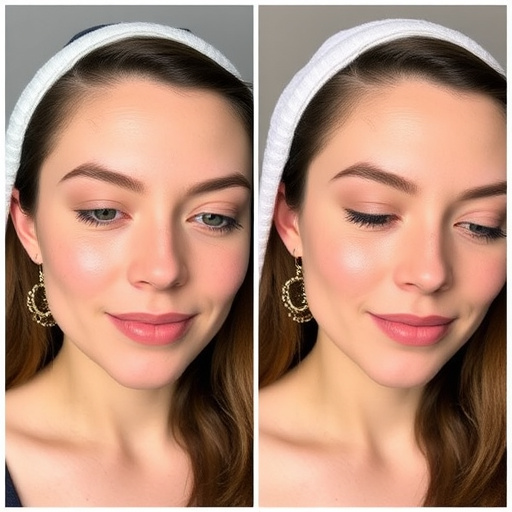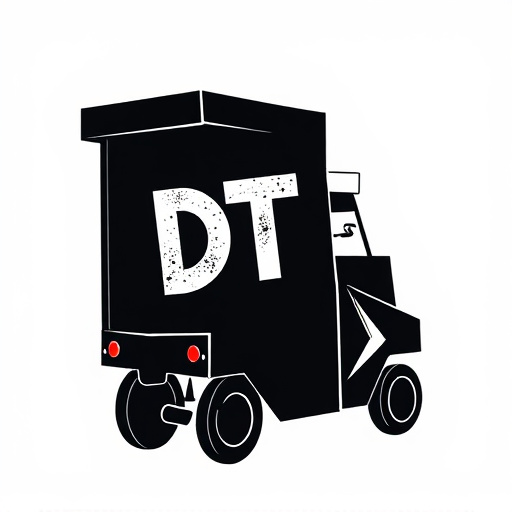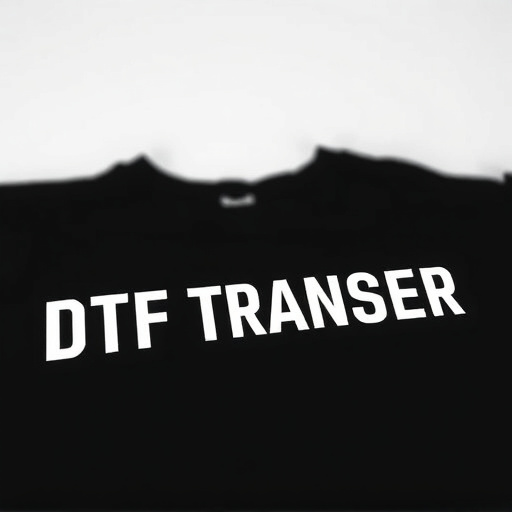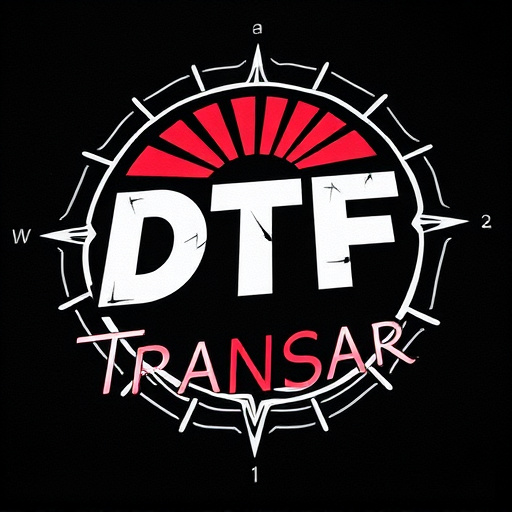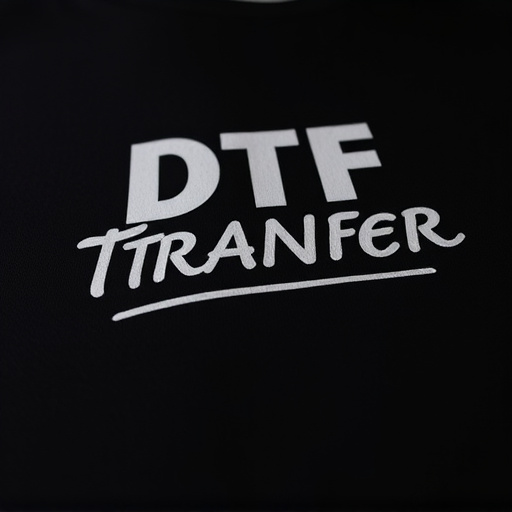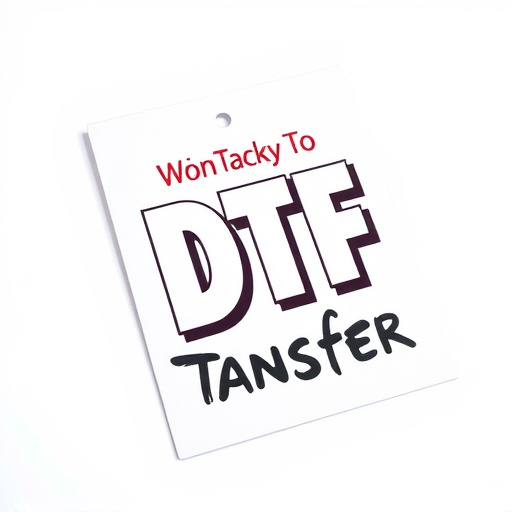Direct to Fabric (DTF) transfer technology is a groundbreaking method for printing custom designs on fabrics. Using special inks applied directly via heat press, DTF offers vibrant, precise prints with fewer steps and no harsh chemicals. Its removable nature makes it ideal for temporary art on textiles, clothing, and home decor. DTF's versatility accommodates diverse fabric types and design complexities, streamlining production while maintaining high-quality prints. It's a cost-effective, eco-friendly solution for businesses and hobbyists alike in multiple industries, from fashion to automotive interiors. Mastering flawless DTF transfers involves proper fabric preparation, precise application, and careful removal.
Discover the revolutionary world of DTF (Direct to Fabric) Transfer Technology—a game-changer in printing and design. This innovative process allows for transfers designed to be removed while still warm, opening up a realm of creative possibilities across various industries. From its benefits and printing process to real-world applications, this article explores how DTF Printing offers an advantage over traditional methods. Learn best practices for applying and removing DTF Prints to unlock the full potential of this dynamic technology.
- Understanding DTF Transfer Technology
- Benefits of Using Removable Warm Transfers
- The Printing Process: DTF in Action
- Applications Across Industries
- Advantages Over Traditional Methods
- Best Practices for Applying and Removing DTF Prints
Understanding DTF Transfer Technology
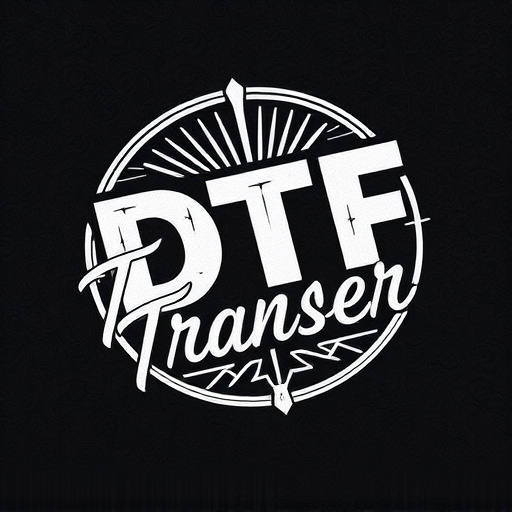
The DTF (Direct to Fabric) transfer technology is a game-changer in the world of textile printing, offering a unique and efficient method for creating custom designs on various fabrics while ensuring they can be removed easily once warm. This innovative process involves applying a special ink directly onto the fabric using a heat press, allowing for precise and vibrant DTF prints. Unlike traditional methods that might require multiple steps and harsh chemicals, DTF transfer simplifies the process, making it accessible to both professionals and enthusiasts.
Understanding the mechanism behind DTF transfers is key. The inks used are designed to bond strongly with fabrics during the heating process but remain soluble in specific solvents when warm. This unique property enables the transferred design to be easily removed from the fabric if desired, leaving the base material intact. This feature makes DTF printing a popular choice for creating temporary or reversible art on textiles, clothing, and even home decor items.
Benefits of Using Removable Warm Transfers
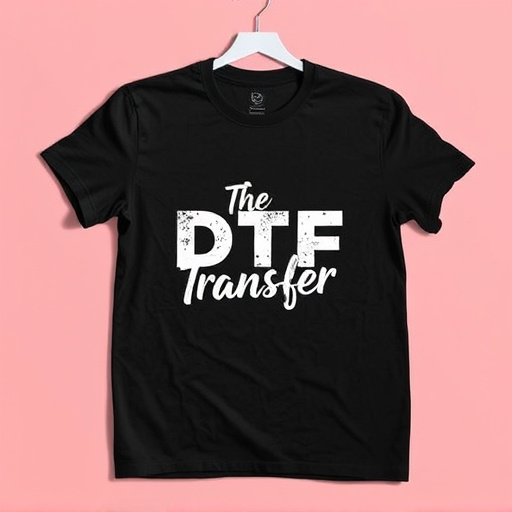
Using removable warm transfers, often referred to as DTF (Direct-To-Fabric) transfers, offers a plethora of advantages in the printing and design industry. One of its key benefits is the ability to apply intricate designs to various fabrics while ensuring the transfer can be easily removed once warmed, leaving no residue. This method revolutionises the way custom prints are created, allowing for versatile applications across fashion, home decor, and promotional merchandise.
DTF printing enables efficient production runs as the transfers can be applied and removed multiple times, making it an eco-friendly choice. The precision of DTF allows for detailed, high-quality prints, capturing every nuance of a design. Moreover, this technique is suitable for a wide range of fabrics, from cotton to polyester, expanding the creative possibilities for designers and businesses alike.
The Printing Process: DTF in Action

The Direct to Fabric (DTF) transfer printing process is a revolutionary technique that allows for the creation of vibrant and durable designs on various fabrics while maintaining ease in removal. Unlike traditional heat transfer methods, DTF involves applying inks directly onto the fabric using specialized equipment, enabling quick drying and heat-free fixing. This modern approach ensures that the prints remain vibrant and long-lasting even after being removed from the fabric while it’s still warm.
During the DTF printing process, high-quality inks are precisely deposited onto the fabric surface, adhering instantly without the need for extensive heat treatment. The result is a crisp, clear image with vivid colors that stand out. This method is particularly versatile, accommodating a wide range of fabrics and design complexities, making it a favorite among professionals and hobbyists alike for creating custom clothing, home decor items, and more. DTF transfers offer an efficient, quick-turnaround solution for those seeking high-quality prints without the usual time constraints associated with traditional heat transfer techniques.
Applications Across Industries
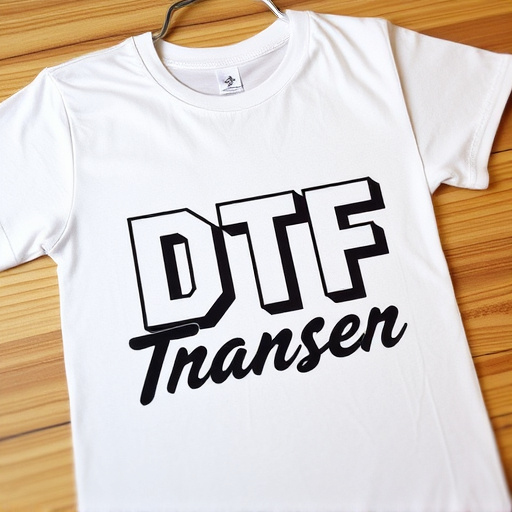
The DTF (Direct to Fabric) transfer process has found its way into various industries, revolutionizing the way businesses produce custom prints on a wide range of fabrics while ensuring they can be removed while still warm. From apparel and accessories to home décor and even automotive interior design, DTF Printing offers unparalleled versatility. In the fashion industry, designers use DTF transfers to create unique, limited-edition garments, allowing for personalized styles without the need for costly embroidery or screen printing.
In manufacturing, this technology enables companies to produce custom fabric patterns for furniture, car seats, and other products with intricate designs. Moreover, its efficiency and precision make it ideal for small-batch production, catering to niche markets that demand customization. DTF Transfers also play a significant role in promoting sustainability by reducing waste associated with traditional printing methods, contributing to a greener manufacturing landscape.
Advantages Over Traditional Methods

Using DTF (Direct to Fabric) Transfers offers numerous advantages over traditional methods when it comes to printing on fabrics while still warm. One of the key benefits is speed and efficiency. With DTF, the transfer process can be completed in a fraction of the time compared to conventional methods, allowing for faster production times and higher output rates. This makes it an ideal solution for businesses that need to meet tight deadlines or handle large orders.
Additionally, DTF Transfers provide superior print quality, ensuring vibrant and lasting colors on various fabric types. The direct application method eliminates the need for intermediate steps, reducing the risk of smudging or fading. Moreover, DTF Printing is versatile, accommodating a wide range of fabrics and designs, making it suitable for both custom t-shirt printing and mass production environments. This technology streamlines the entire process, from design to final product, delivering exceptional results while maintaining cost-effectiveness.
Best Practices for Applying and Removing DTF Prints

When applying a DTF (Direct to Fabric) transfer, it’s crucial to follow best practices for optimal results. Start by ensuring your fabric is clean, dry, and free from any contaminants that could hinder adhesion. Preheat your iron or heat press to the recommended temperature for the specific DTF material, following the manufacturer’s guidelines. Position the transfer accurately on the fabric, aligning the edges carefully. Apply gentle pressure while heating the transfer, making sure it makes complete contact with the fabric. Maintain a consistent pressure for the recommended duration to ensure the DTF adheres properly.
For safe removal, plan to take off the DTF print while it’s still warm. This is because heat is what activates the adhesive, so removing it when it’s still warm helps prevent the transfer from peeling or leaving behind residue. Use a soft cloth or paper towel to gently press down on the back of the transfer, slowly lifting an edge to test its adhesion. If it lifts easily, continue lifting along the edges until the entire transfer is removed. Be cautious not to stretch or pull harshly, as this could damage the fabric or the DTF design. After removal, inspect the fabric for any remaining adhesive or debris, cleaning it promptly to prevent further issues.






